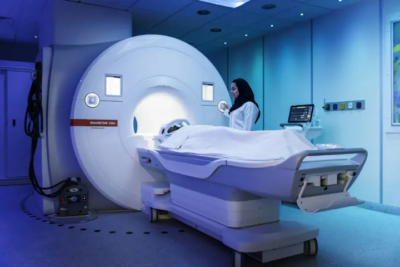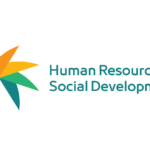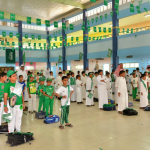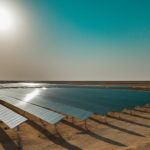
“Overall, the revised mandate represents a strategic response to market conditions, with implications for capex requirements, particularly in greenfield offshore developments. Despite the pause in capacity expansion, Saudi Arabia remains committed to maintaining its role in balancing the global oil market and ensuring supply stability. In summary, Saudi Arabia’s decision to maintain its maximum sustainable capacity at 12 million bpd reflects a nuanced response to market dynamics, with implications for future investments, the composition of its oil mix, and offshore activities.”
Rystad Energy Analyzes Saudi Arabia’s Pause in Oil Capacity Expansion Amid Market Uncertainty: Implications for Offshore Projects and Supply Stability [Solar Quarter]

“I think [joining] the program [GCAP] is important to Saudi Arabia and it’s managed by MoD. And we are part of that from the localization point of view. There is a serious discussion [as] Saudi Arabia is very keen on the sixth-generation fighters, and we are talking to the UK their partners and we are making good steps forward.” Ahmad Al-Ohali, the governor of the Saudi government’s General Authority for Military Industries (GAMI), said in an interview at this week’s World Defense Show. Saudi Arabia ‘keen’ to join GCAP fighter program, but localization a must: GAMI governor [Breaking Defense]

“Even though the Houthis have attacked no China-owned ships, leaders in Beijing have become increasingly concerned about the economic costs of the Iran-endorsed Houthi attack campaign. China’s companies depend on the free flow of goods between China and Europe. The Houthi attacks have caused the cost to ship a standard 40-foot container from China to northern Europe to jump from $1,500 to $4,000, according to the Kiel Institute for the World Economy in Germany.”
Houthi Attacks Upend Beijing’s Regional Strategy [Soufan Center]

“We have reached 100 million tourists this year, 77 million from home, 27 million from abroad, over 100 million… [we]now hope to hit 150 million tourists by 2030, up from an earlier goal of 100 million, with 70 million of those coming from abroad, up from an earlier goal of 30 million.” Ahmed Al-Khateeb, Minister of Tourism, Saudi more than doubles 2030 foreign tourism target: minister [Al-Monitor]

“2023 was a rollercoaster year for Venture Capital. Globally, VC funding fell to $248.4B in 2023, the lowest level since 2017, while transaction volume fell by 30% YoY to 29,303 deals in 2023, a 6-year low, as reported by CB Insights. This trend was against the backdrop of stricter monetary conditions, rising inflation, and, in some regions, geopolitical instability. The Middle East and North Africa (MENA) Region is a prime example of this; amidst rising interest rates, technological disruptions, and geopolitical tensions, the number of deals in MENA reached its lowest levels since 2018, declining by 34%, while capital deployed retreated by 23% YoY, as reported in our MAGNiTT FY 2023 MENA Venture Investment Report.
The Rise of Saudi Arabia’s Venture Capital Ecosystem: A 5-Year Reflection [Magnitt]

“The United States carried out retaliatory airstrikes on Friday in Iraq and Syria against more than 85 targets linked to Iran’s Revolutionary Guard (IRGC) and the militias it backs, the U.S. military said, after a deadly attack in Jordan that killed three U.S. troops and injured some 40 others. The strikes are believed to be just the first in a multi-tiered response by President Joe Biden’s administration to the attack last weekend carried out by Iran-backed militants. The strikes hit more than 85 targets spanning seven locations, four in Syria and three in Iraq, and included the use of long-range B-1 bombers that flew from the United States, the military said.
They targeted the Quds Force – the foreign espionage and paramilitary arm of the IRGC that heavily influences its allied militia across the Middle East, from Lebanon to Iraq and Yemen to Syria.”
US carries out strikes in Iraq and Syria against Iran-linked targets [Reuters]

“Who are you going to have that relationship with? Countries recognize the risks of working with authoritarian-backed suppliers and seek partners that will strengthen their independence and their energy security. These are not trivial decisions. They’re really important 50 to 100-year decisions, and they seek the United States.” Kirsten Cutler, a Senior Strategist for Nuclear Energy Innovation at the US State Department, New-wave reactor technology could kick-start a nuclear renaissance — and the US is banking on it [CNN]

“Saudi Arabia’s Vision 2030 represents a fundamental shift from traditional reliance on oil to building a more sustainable economic landscape. The analysis from GGC Consulting, which stretches a period of seven years, shows a significant 78% increase in non-oil exports, amounting to 137 billion Saudi Riyals. This growth corresponds with a 12% rise in the real gross domestic product (GDP) and an impressive 744% surge in the current account. According to the researchers, the developments demonstrate the dynamic interaction between economic growth, and that of exports and the current account.” Analysis: The transformative journey of Saudi Arabia’s exports [Consultancy ME]

“Saudi Arabia is absolutely vast in scale, that is the first thing that strikes me. It’s also incredibly diverse, you get everything from jet black volcanic lava fields to red sandstone deserts like you might see in Wadi Rum (in Jordan), to high granite ranges like you’d see in the Sinai (in Egypt), to green forested rolling mountains in the south. The natural beauty of it is extraordinary, it’s one of the most visually spectacular places, if not the most spectacular, that I have ever seen in the Middle East. Saudi Arabia feels very wild, very beautiful, it feels untrodden, perhaps more than other destinations it feels new.” Ben Hoffler, has spent 15 years developing trails in Egypt’s Sinai Peninsula and Jordan and is now working with local guides, including Bedouin scouts, to develop Saudi’s ancient ways for local and international hikers. The epic hiking trails emerging in Saudi Arabia [CNN]

“The IEA demand forecast differs from a more optimistic scenario presented by OPEC in its “Monthly Oil Market Report” published a day earlier. While the IEA sees “subdued global economic growth,” OPEC’s assessment is for more robust economic growth of 2.6%, leading to a 2.25 mb/d rise in oil demand. Another key forecast, by the U.S. Energy Information Administration, is closer to the IEA estimate for demand growth. The EIA in its “Short Term Energy Outlook” released January 9 projected demand growth of 1.39 mb/d in 2024.” Kate Dourian, IEA Cuts Oil Demand Forecast for 2024 but OPEC Remains Bullish [Arab Gulf States Institute in Washington]











